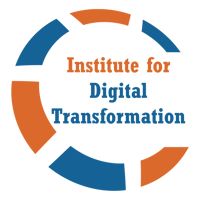Digital transformation is not just a fad or a “nice to have.” It is imperative in today’s business environment. The hallmark of a digitally transformed organization is the integration of products, processes, employees, customers, and suppliers. They operate together as a system to meet customer’s needs and desires. The expectation is that real-time information concerning products, services and accounts is available. With the information, the organization and its customers can craft a solution to meet the customer’s ever-changing needs in a real-time dynamic environment.
A severe winter storm that affected much of the USA leading up to the Christmas 2022 holidays created travel challenges for the airline industry. Most of the major airlines canceled several dozen flights and recovered from the storm within a few days. However, Southwest Airlines cancelled thousands of flights and did that day after day. It was more than a week after the storm hit until Southwest returned to near normal operations. During that time over 80% of the flights each day were cancelled or disrupted. Southwest has angered a huge segment of its customer base and is now facing investigations from government agencies.
We are not accusing Southwest of any nefarious actions or gross negligence. Many Southwest employees worked long hours to try to resolve the problems. However, the systems in Southwest were not able to take the strain from a major weather event. In interviews with major news outlets, Southwest executives and personnel have identified that one of the major causes for their breakdown was an antiquated digital infrastructure. The fragility of the system was not able to respond to the demands placed upon it.
The problems with the digital infrastructure were recognized prior to the holiday storm. Southwest had experienced several similar situations on a smaller scale during the preceding two years. Southwest executives had acknowledged the need for an upgrade in an interview with Fortune magazine in November of 2022.
The core scheduling elements of the Southwest system were based upon 1990s technology. During the storm, the system lost track of airplanes, crew, customers and luggage. The scheduling systems were not integrated. The only method the airline had for immediate real-time communication with pilots and aircrew was a physical phone call and their phone system was backed up with hour-long hold times.
This problem is not unique to the airline industry. The massive disruption in the supply chain experienced by most industries over the past year is a manifestation of the same problems. Companies lost track of inventory and had difficulty scheduling production with shortages in materials, workers, and equipment. Organizations that operate with Industry 3.0 technology and siloed management processes are vulnerable to large disruptions. When these occur, the organization must essentially reset and start over. Which is what Southwest had to eventually do to recover.
Let’s quickly review industrial transformation. Industry 1.0, which dates from the late 1700’s, was the mechanization of industrial processes with steam power. Industry 2.0, which started in the early 1900’s, was the standardization of industrial processes by applying the process and people management associated with the assembly line and electrification. Industry 3.0, which occurred in the latter parts of the 1900’s, was the automation of industrial processes. Computers were used to control machines. Computers were used to schedule processes. Computers were used to track inventory. However, the Industry 3.0, computer systems were stand-alone systems optimized for their unique application.
Industry 4.0, which has been building for the past 15 years, is often referred to as digital transformation. It is characterized by a transformation in technology, a transformation in process management, and a transformation in workforce management. The critical characteristic in all three of these is integration. The technology systems are integrated with data and information flowing to applications throughout the system in real-time. The data is not siloed and isolated in separate systems that do not communicate with each other. Process management is integrated with process data being generated and shared through the value chain. This includes process data at suppliers and throughout the supply chain and distribution. Further, data from the customer’s point of use is often shared back into the system so that the customer’s processes and applications can be integrated with other applications. Finally, the workforce management is integrated across functional and organizational boundaries to focus on process performance. Workers are empowered with the appropriate data and information to make real-time decisions and solve real-time problems. There is no need to pass every decision up the chain and wait for an answer.
This transformation strikes at the heart of an organization. It is not just a new IT program or upgrade; it is a change in the way the organization does business. The integration of real-time data leads to transparency and accountability. These in turn will strengthen customer relationships and engender trust between employees. The lack of communication and information leads to mistrust, resentment, and anger from both customers and employees. We need only look to Southwest Airlines to understand the impact.
The point to take away from this miniature case study is the need for digital transformation. We are not accusing Southwest Airlines of evil intent or gross incompetence. Rather, they lacked the tools and systems needed to meet the demands of today’s business environment. They need to digitally transform to be able to effectively compete in today’s business environment.
If your organization has not embarked on the journey of digital transformation, you are placing the organization at risk. This transformation process normally takes several years to incorporate the technology, change the process and operational management systems and train the workforce at all levels of the organization. Even then it will take some real-world experience to work out the bugs. Don’t be the next Southwest Airlines.
Tag/s:Business TransformationCustomer ExperienceDigital Disruption








